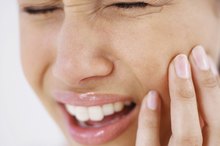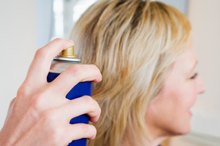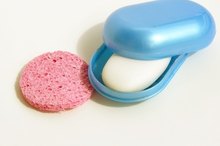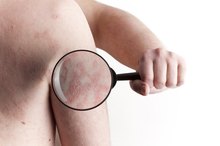What does fact checked mean?
At Healthfully, we strive to deliver objective content that is accurate and up-to-date. Our team periodically reviews articles in order to ensure content quality. The sources cited below consist of evidence from peer-reviewed journals, prominent medical organizations, academic associations, and government data.
- Slideshow: Types of dermatitis. (2018).
- Ting PT, et al. (2007). Answer: Can you identify this condition?
- Ting PT, et al. (2007). Answer: Can you identify this condition?
The information contained on this site is for informational purposes only, and should not be used as a substitute for the advice of a professional health care provider. Please check with the appropriate physician regarding health questions and concerns. Although we strive to deliver accurate and up-to-date information, no guarantee to that effect is made.
How to Reduce Redness Around the Crease of the Nose
Redness around the crease of the nose may be caused by an allergy, chemical reaction from soap or makeup, infection, fungus, dry skin, dermatitis, injury, or irritation from frequently blowing your nose 3. The redness around your nose may be accompanied by pain, itching and swelling. You may notice that your skin is beginning to flake, too. You need to find out what is causing this condition and treat it. If you do not, you are risking serious infection or facial scarring. There are steps you can take to reduce redness around the crease of the nose.
See your doctor. He will examine your facial redness to determine what is causing it. Tell your doctor about any new products you may have used, if you have a cold, or if you recently sustained an injury to that area. Your doctor may refer you to a dermatologist for further evaluation.
How to Relieve a Face Swollen From a Toothache
Learn More
Take an antibiotic. If the cause of your nose crease redness is from an infection, your doctor will prescribe an antibiotic. Your antibiotics may either be in pill form, or as a cream or ointment. Finish the entire course of your antibiotics; if you do not, your infection may not go away.
Try hydrocortisone cream. Over-the-counter hydrocortisone creams are effective in reducing redness and inflammation. Ask your doctor if hydrocortisone cream is right for your condition because it may interact with the medications he already prescribed for you.
Allergies to Hairspray
Learn More
Ask about an anti-fungal cream. Your redness may be cause by a fungal infection. The fungus yeast is a common cause of skin redness and irritation around the creases of your nose. Anti-fungal cream will eliminate the fungus and relieve the redness.
Take an anti-inflammatory medication. Over-the-counter anti-inflammatory medications will reduce your redness. Redness of the skin indicates an inflammatory process, and taking an anti-inflammatory will suppress your inflammation and reduce redness.
Tips
Be gentle on your skin. When you blow your nose, take care not to excessively rub the area. Do not use irritating paper towels or napkins. Use only soft tissues to blow your nose.
Warnings
If you experience pain or bleeding around the crease of your nose, call your doctor. You may have a severe infection or skin condition that requires medical attention.
Related Articles
References
- Babaoff M, et al. (2010). Erythematous rash on face.
- Keri JE. (2017). Perioral dermatitis.
- Perioral dermatitis. (n.d.).
- Peri-oral dermatitis and rosacea. (n.d.).
- Perioral dermatitis/periocular dermatitis. (2017).
- Slideshow: Types of dermatitis. (2018).
- Ting PT, et al. (2007). Answer: Can you identify this condition?
Tips
- Be gentle on your skin. When you blow your nose, take care not to excessively rub the area. Do not use irritating paper towels or napkins. Use only soft tissues to blow your nose.
Warnings
- If you experience pain or bleeding around the crease of your nose, call your doctor. You may have a severe infection or skin condition that requires medical attention.
Writer Bio
Meadow Milano has been a registered nurse for over 20 years, with extensive experience in emergency nursing, labor and delivery and general medicine. She has written numerous articles for nursing publications pertaining to health and medicine, and enjoys teaching in the clinical setting.









